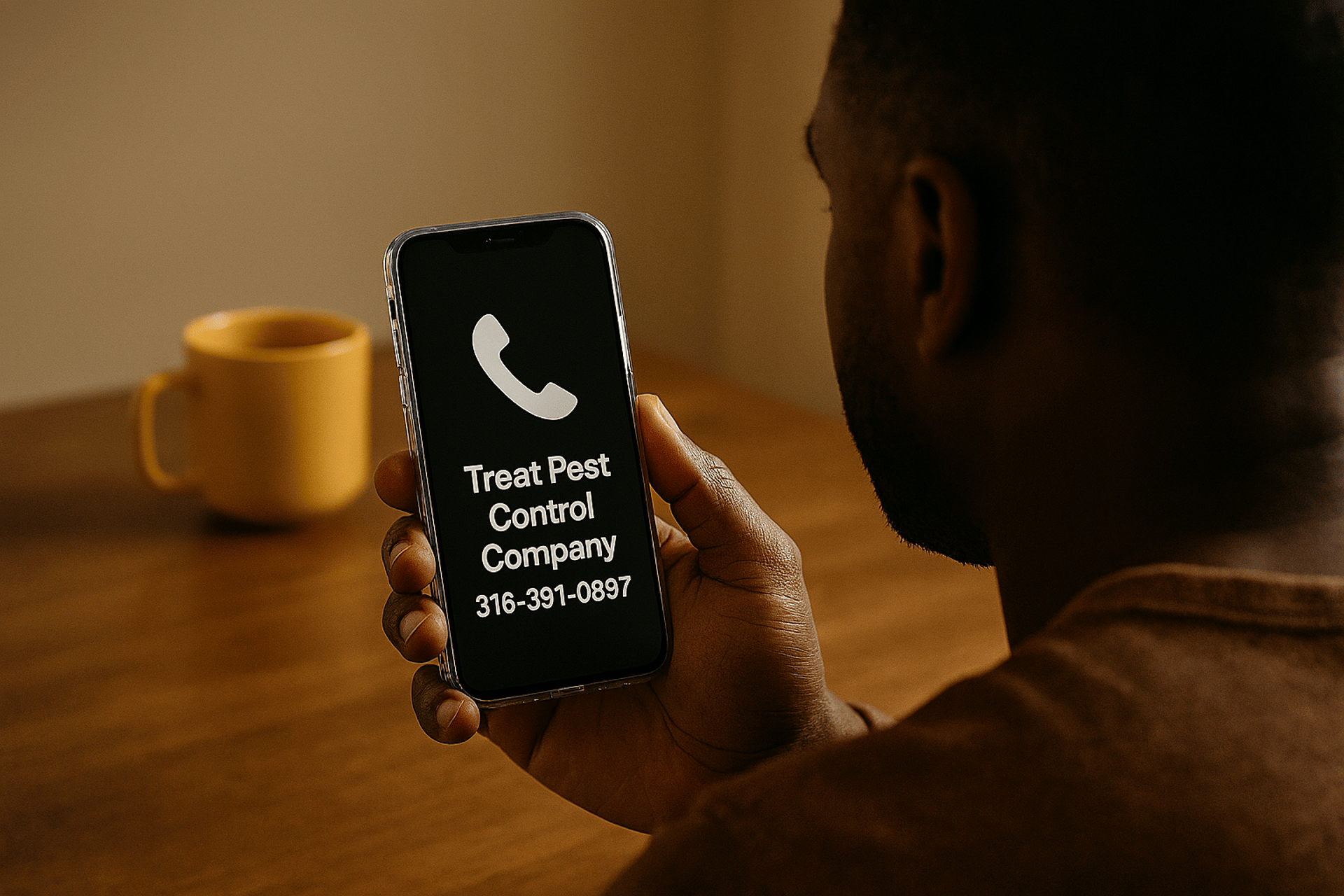Part 2: The Cockroach Relay — Inside the Plant (Industrial & Food Manufacturing)
Part 2: The Cockroach Relay — Inside the Plant (Industrial & Food Manufacturing)
Blaine M. Gales
10/9/20255 min read


The Cockroach Relay — Part 2: Inside the Plant (Industrial & Food Manufacturing)
Treat Pest Control Service | Wichita & South-Central Kansas:
There’s a certain hour—somewhere between the last sanitation pass and the first inbound truck—when a facility feels like a movie set after the crew goes home. Lines are quiet, dock doors breathe in the night air, and a single floor drain gurgles like it knows a secret. If you manage a food or industrial site in Wichita or South Central Kansas, you also know that quiet doesn’t always mean calm. It’s when the roach relay really starts: under kick plates, through expansion joints, and across the invisible highways of conduit and utility penetrations. You won’t hear the footsteps. You’ll see the evidence—if you know where to look.
Industrial cockroach control is different from apartments or retail because the stakes are higher and the rules are stricter. You’re not just protecting a brand—you’re protecting product integrity, audit scores, and uptime. German cockroaches love the warmth of motor housings, the condensation under lines, and the micro-debris that escapes even excellent sanitation. American and Oriental roaches prefer mechanical rooms, drains, dock wells, and the charming chaos behind a baler. They don’t care about your schedule, your shift change, or your KPIs. But they absolutely respond to pressure—smart, mapped, measured pressure that turns a facility from welcoming to inhospitable.
That’s why our programs at Treat Pest Control Service begin with maps, not cans. We walk, we kneel, we flashlight. We place monitors where roaches actually live, not where they make good headlines. Hinge voids, panel seams, floor-to-wall junctions, and the warm envelope behind enclosures: these are the neighborhoods. The first visit is a story-gathering mission—what the drains are telling us, how moisture travels after washdown, which production zones run hottest, and where corrugated seems to multiply overnight. When the monitors talk, we listen: species, pressure, direction of travel. From there, we write the playbook your auditors wish every vendor used.
And yes, auditors. You’re juggling GMPs, HACCP, internal corporate standards, and the ever-watchful eyes of third-party audits. “Show me your trend analysis” is not a suggestion—it’s the moment the flashlight turns on your data. Our documentation is built for that: monitor maps, service logs, threshold triggers, corrective actions, and the narrative that links them. It’s the difference between “we sprayed” and “we measured, adjusted, and proved control.” When an auditor asks for six months of roach sightings by zone, you’re not flipping through a binder; you’re handing over a clean line that shows pressure falling where interventions were applied.
The tools matter—and where they’re used matters even more. Repellent broad-sprays around production floor edges might feel decisive, but they can scatter populations into places you really don’t want them. Instead, we rely on precision: gel baits tucked deep into cracks where light doesn’t reach, insect growth regulators breaking the life cycle, and careful crack-and-crevice applications placed behind shields and panels where activity is mapped—not guessed. In high-pressure startups, we’ll vacuum harborage with HEPA units and use targeted flushing so baits go where they’ll be eaten, not admired.
Sanitation is your co-star. Even strong bait rotations struggle in an all-you-can-eat environment. We collaborate with your QA and sanitation leads to dial in changes that don’t blow up production: elevate storage so nightly squeegees have a fighting chance; tighten dry clean practices around bearings and housings; fix the heroic but leaky condensate line that’s been “on the list” since last summer; and teach drains to behave with bio-enzymatic maintenance and proper screens. Small changes in the right places make roaches work harder for every calorie—and hard-working roaches take more risks on bait stations.
Exclusion is the third pillar, and it’s criminally underrated. Door sweeps buy you back control of dock doors that never quite settle. Escutcheon plates erase the “we’ll caulk it later” gaps around penetrations. Brush seals tame conveyor wall pass-throughs that act like breezy invitations. You can hear the difference on a windy night: less air, fewer uninvited guests, better temperature control. It’s not glamorous, but it’s money in the bank—less ingress, less pressure, less product at risk.
Now, the suspenseful part—the moment that keeps facility managers awake. Picture this: 3:07 a.m., a forklift idles at Dock 4, and a swing-door pallet from upstream distribution opens like a curtain. If you’re relying on a once-a-quarter spray, you’ve already lost. If you’re running an audit-ready IPM program, you’re fine. Why? Because inbound inspection is part of your plan. Pallets don’t camp on the floor; they move. Corrugate isn’t decor; it’s controlled. And monitors near docks tell you whether your risks are inbound, outbound, or brewed in-house. When something spikes, your data shows where and when—so your response is surgical, not theatrical.
What about downtime? We plan around you. We align service windows with sanitation cycles, guard product zones with physical barriers where needed, and communicate ahead of line changeovers so nothing surprises a crew leader five minutes before set-up. Industrial pest control is choreography: production, sanitation, maintenance, QA, and us—each doing our part so the floor stays clean, safe, and audit-ready.
If you want the practical ending, it’s this: control is a process, not an event. Monthly or even biweekly service in high-risk plants keeps pressure low and data fresh. Your program rotates baits to avoid resistance, pairs IGRs with targeted placements, and escalates only when trend lines whisper “something’s changing.” You don’t wait for a day-shift sighting to tell you what third shift already knew. You already knew—because your monitors told you yesterday, and your plan adjusted last night.
And here’s the twist that isn’t really a twist: the same rigor that protects an industrial line also protects your reputation. Vendors talk. Inspectors talk. A plant that runs a tight, measured IPM program sends a simple message: we control risks before they control us. That’s good for brand trust, good for SQF/BRC/GFSI confidence, and very good for your nerves.
Treat Pest Control Service is locally owned and family operated, fully licensed and insured, and built for the realities of Kansas industry. We serve Wichita and South-Central Kansas and travel statewide for portfolios that span multiple sites. Our technicians know the difference between a nuisance sighting and a systemic trend—and our reports make life easier for QA, maintenance, and the person who has to sit across from the auditor with the clipboard and the impeccable poker face.
If your monitors are too quiet (or too loud), your drains have started telling stories, or a dock door never seems to close all the way, it’s time to tighten the playbook. We’ll bring the maps, the trend lines, the bait rotations, and the calm you want at 3:07 a.m.
Call: 316-391-0897
to schedule an industrial inspection or request an audit-ready proposal.

Serving Wichita & South Central
Kansas
Contact Us Today
FOR THE BEST IN KANSAS
BUG AND PEST
CONTROL SERVICES
CALL TREAT PEST CONTROL SERVICE FOR GUARANTEED SATISFACTION
when you choose us for your commercial or residential
PROFESSIONAL EXTERMINATION SERVICE
Your trusted partner in residential and commercial bug and pest control
MESSAGE US TODAY
© Treat Pest Control Service.
All rights reserved.


We accept:
PO BOX 780622
Wichita, KS 67278

